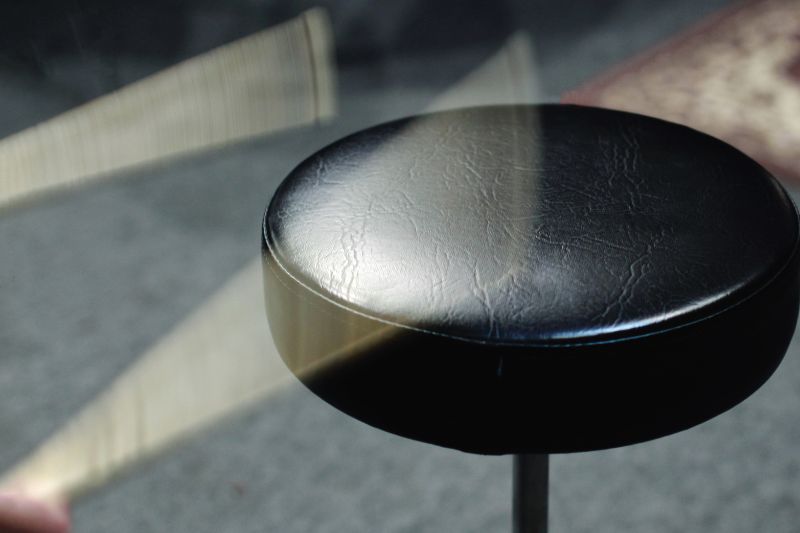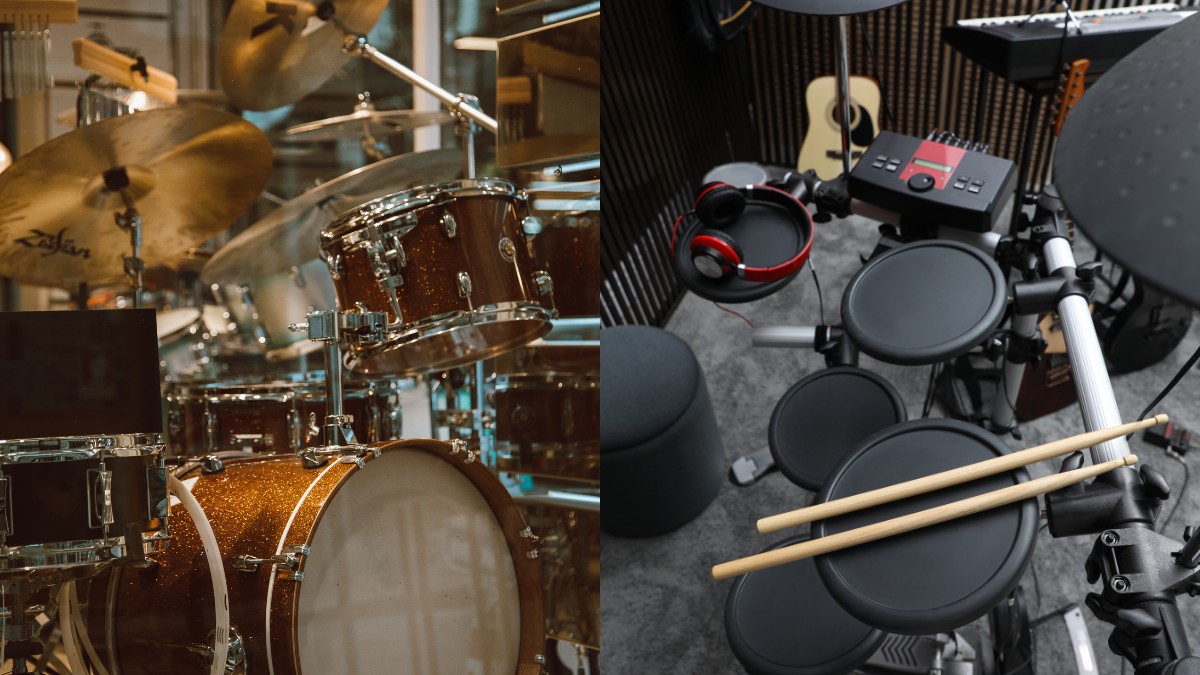How to Position and Set Up Your Drum Throne

Generally, the height of your drum throne should be the same as the top of your knee when standing up beside it. Your legs should be angled slightly downwards, and that should be the case also when you put your feet on the kick and hi-hat pedals.
Good posture and an understanding of ergonomics are crucial for drummers before they start practicing for long hours. With proper drum throne adjustments, you can easily reach any drum and cymbal, and your leg should rest comfortably on the kick and hi-hat pedals.
However, there’s more to it than that, so keep on reading to make sure you’re drum throne setup is as optimal as possible.
Contents
At a Glance
- The height of your drum throne should be the same as the top of your knee when standing next to it so that when you sit on it, your legs are slightly angled downward.
- When sitting on your drum throne, your legs should reach both the hi-hat and kick pedal equally. You shouldn’t stretch your legs and your calves should be almost perpendicular to the ground.
- Your snare drum is the next component when setting up. It should be equally distanced between the two pedals, sitting in the middle.
- Posture is another crucial component in this equation. Make sure to sit up straight, not on your tailbone, so that your hamstrings stretch naturally and relax your arms so that you do not exude excess energy while playing.
- Avoid drum thrones with backrests as they promote bad posture. If you have a drum throne like this, make sure to only use the backrest for short breaks and rests but not while playing.
How to Position the Drum Throne?
Figuring out the height of the drum throne is only half of the work you’ll need to do to get the perfect posture. The rest comes with positioning the drum throne. Too close to the drums, and your legs will bend in a weird position, making you unable to play correctly. Too far away from the drums, the same thing happens.
In order to determine the correct position of the drum throne for you, you need to set up the kick drum and the hi-hat. Once you get the correct position of the pedals, you can then start to mess around with the position of the drum throne.
Start with taking the drum throne further away from the pedals, where you have to stretch to get to the pedals. Then, start bringing it in until your calves are almost perpendicular to the ground. If your legs start to bend and your knee is closer to the drums than your feet, you’ve gone too far and need to bring it back.
Make sure your feet are reaching the pedals comfortably so that you don’t exude extra energy to play them. If for some reason one foot isn’t reaching the pedal quite as comfortably as the other one, it’ll force your body to contort, hence, use excess energy to play. Make sure the distance and placement of your feet and legs are perfect so that it doesn’t cause any discomfort.
Snare Position
Just like the hi-hat and kick drum pedals, the snare drum is a crucial component for ideal positioning. You want your snare drum at an equal distance between the pedals so that it’s in the middle of your feet. Before you go and set up your entire kit, these three components have to be in perfect position. After you have these things in place, you can set up the toms and cymbals.
Proper Posture
Beginner drummers don’t usually think about good posture and ergonomics around the drum set, especially the drum throne, and that’s setting yourself up for failure. Yes, you can do it if you really put your strength behind it, but in the long run, it’s gonna hurt you more than it helps you.
Poor posture will hurt your technique, you can learn incorrectly and then have to redo all that again, but worst of all, it can really damage your health in the long run. Therefore, it’s really important to learn this early on when you start practicing rather than later when you already have formed a habit.
Make sure to sit up straight (not on your tailbone) so that your hamstrings will stretch properly and naturally. Avoid drum thrones with backrests as they promote poor posture. Relax your arms and don’t force your hits. If you’ve already positioned the drum part correctly, playing should be easy, without the need to use too much energy.
Types of Drum Thrones
There are many different types of drum thrones on the market, making it hard for you to decide which one to buy, especially if you haven’t tried out a bunch of them. One common misconception among beginner drummers is that drum thrones with backrests are better.
Drum thrones with backrests are bad, and you should try to avoid them. They can make you develop some pretty bad habits; you will not use the backrest anyway. They can be helpful once you learn good posture, to rest between takes or in the studio, basically, anytime you are not actually playing the drums.
There are also drum thrones with seats that rotate, whether you should get one that rotates or not is purely based on preference. I like having my drum throne rotate, and it’s sometimes useful to stretch your legs on a break when you practice for hours.
Are Drum Thrones that Important?
Most certainly yes! Drum thrones are specifically designed for drummers, built with ergonomics in mind. The comfort and positioning of a regular chair do not even compare. Drum thrones are very stable and include adjustable parts for perfect positioning.
Conclusion
Perfecting the position and height of your drum throne is very important to figure out early on. It is also one of the first things they teach you in music schools. Following the tips in this article, you can get comfortable pretty easily and set yourself up for success. Sitting straight and having a good drum throne position will also help you when you’re practicing your technique.







